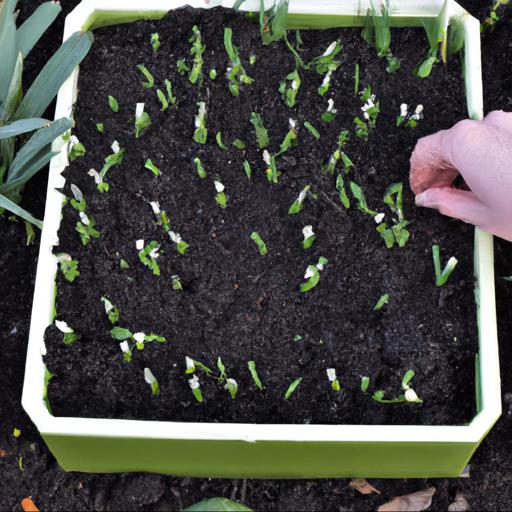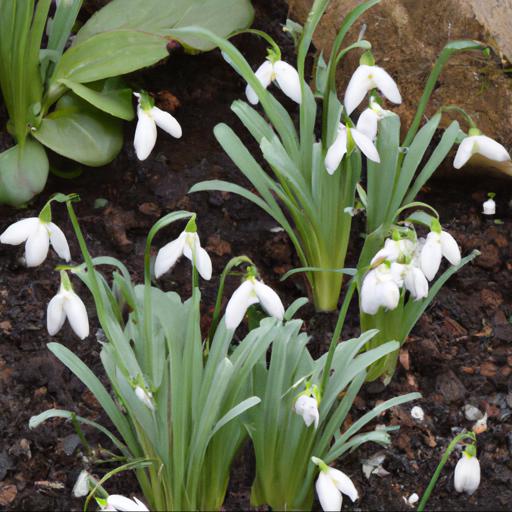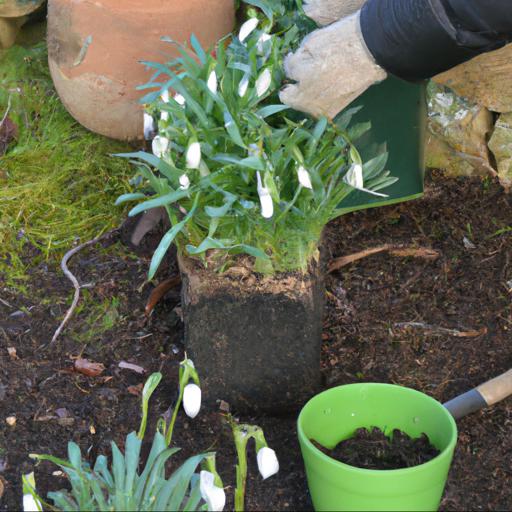Welcome to our blog about planting snowdrops ‘in the green’! For centuries, this traditional practice has been a symbol of hope and renewal, and it’s a wonderful way to bring a little bit of spring into your garden during the cold winter months.
Whether you want to add a splash of colour to your garden or create a stunning display of white blooms, planting snowdrops ‘in the green’ is a great way to get started. In this blog, we’ll provide you with all the information you need to get started, from choosing the right variety of snowdrop to planting and caring for your new flowers. So come along and join us on our journey as we explore the joys of planting snowdrops ‘in the green’!
Benefits of planting snowdrops ‘in the green’

Planting snowdrops ‘in the green’ is a magical way to bring a heavy dose of winter cheer to your garden. Planting snowdrop bulbs this way, that is, in their foliage and not dried out, will provide a much more reliable and abundant display of pretty snowflakes, rather than one or two individual white-hooded blooms poking through barren earth. With its vibrant appearance, the snowdrop has become one of the leading signs of the changing of the seasons with its dependably early-blooming habits.
Furthermore, it is much easier to plant snowdrops ‘in the green’, which makes it an excellent choice for those looking to spruce up their garden with minimal effort. The process of planting snowdrops ‘in the green’ really is quite simple.
It is best to wait until the foliage is just starting to form before planting, as this will ensure that the bulbs get the best start in life and a full bloom display in winter. Soak the bulbs in water for a few hours before planting in well-drained soil, ideally a mix of soil and peat moss. Plant the bulbs at least 4 inches apart, no more than 4 inches deep and cover them with soil.
During the winter, snowdrops will remain dormant and then re-emerge the following spring, giving you lots of Joy over the months ahead. Not only is planting snowdrops ‘in the green’ a much simpler method than traditional dry planting, but it also presents a range of benefits to your garden and its inhabitants.
Studies have shown that planting snowdrops this way encourages a greater number of pollinators to visit your garden, like bees and butterflies, something which can make a huge difference to the biodiversity of your area. Planting snowdrops this way also means that their growth is not limited to the first of the year, but instead they will flower through the winter, providing a much needed source of nectar for hungry wildlife.
With such a wide array of benefits, planting snowdrops ‘in the green’ really is the way to go when looking to add a magical touch to your winter garden.
Tips for planting snowdrops ‘in the green’

:It doesn’t get much more magical than ‘planting snowdrops in the green. ‘ Planting snowdrops in the green is a popular way of planting snowdrops among UK gardeners due to its gentle beauty, and when done right it’s a guaranteed way to wow your garden during the winter. The best time to plant your snowdrops ‘in the green’ is in the spring when the snow drops have started to form buds, usually from March to May.
You will need to dig them up from their natural habitat, either from woodland or a friends garden, and be sure to do so responsibly. Whenever harvesting snowdrops, you should only dig up clumps as one large piece, without breaking it into smaller parts as every small piece needs to retain its roots in order to survive and flower in the following years.
Upon planting your snowdrops you should ensure you provide them a moist area with some dappled shade. A well prepared soil with good drainage that is slightly acidic is the ideal condition for your snowdrops. After planting them in their desired location you should add mulched leaf mold or compost to help retain moisture and provide a place for the roots to thrive.
By following the tips above, you can be sure that your snowdrop collection will not only add life to your garden during the winter but will also come back and flower for many seasons to come, giving you long lasting beauty for years to come.
Common mistakes to avoid when planting snowdrops ‘in the green’

Snowdrops are a welcome harbinger of spring, with their dainty and delicate white flowers lifting the spirits of any gardener. Planting snowdrops in the green is a simple and easy way to establish a large population of these much-loved blooms. However, take care not to make the common mistakes associated with this method of propagation.
When planting snowdrops ‘in the green’, there are two main errors to avoid. Firstly, planting too deep.
Snowdrops will easy become overwhelmed if planted too deep. The optimal depth is around two inches so that the bottom-most leaves of the bulbs are just above the soil line. Planting any deeper than this can lead to poor flowering and bulb rot.
The second error to watch out for is planting in the wrong soil. Snowdrops prefer moist, well-drained, yet hostile soil.
Clay should be avoided or added to sparingly, as it can stunt their growth as well as reduce air circulation. A chalky loam or garden compost is ideal when combined with some sharp sand.
Finally, it is important to remember that snowdrops dislike competition and overcrowding. When planting a group of snowdrops in one spot, it is important to spread them around to avoid competition. When planting more than 5 bulbs, they should be spaced at least twice their own length apart.
Also, choosing an area where no other plants shade the flowers is essential. In summary, carefully consider these tips when planting snowdrops ‘in the green’, to ensure that your snowdrops have a great start and reach their full potential. With the right preparation and planting, you can enjoy a beautiful, blooming carpet of snowdrops for years to come.
Our video recommendation
Conclusion
Snowdrops are a beautiful and hardy flower, and planting them ‘in the green’ is an easy way to add a splash of colour to your garden. Planting snowdrops in the green is a simple process that requires little effort; simply dig a small hole, place the roots of the snowdrop in the hole, and cover with soil. With a little bit of care and attention, you can enjoy a beautiful display of snowdrops in your garden for years to come.
FAQ
What is the best time to plant snowdrops?
The best time to plant snowdrops is in the fall, when the soil is still warm and the days are cooler.
How deep should snowdrops be planted?
Snowdrops should be planted at a depth of 3-4 inches.
What type of soil is best for planting snowdrops?
Well-drained, humus-rich soil is best for planting snowdrops.
How often should snowdrops be watered?
Snowdrops should be watered regularly, about once a week or when the soil feels dry.
How much sunlight do snowdrops need?
Snowdrops need partial to full shade, so they do not need a lot of direct sunlight.
What are the benefits of planting snowdrops ‘in the green’?
The benefits of planting snowdrops ‘in the green’ are that it can help to create a more naturalistic look, as the snowdrops will establish more quickly and flower earlier than if they were planted as bulbs. Additionally, this method of planting can help to reduce the risk of disease and pests, as the plants are already established and have a better chance of surviving.

